
lifereborn
Scientist, scholar, hapless train wreck all wrapped into one neurotic package.
71 posts
Latest Posts by lifereborn
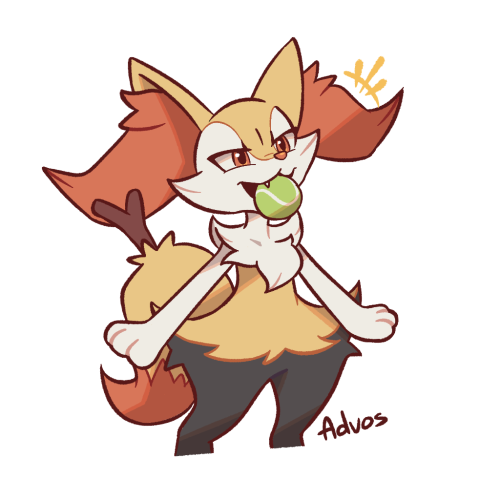
New Toy
(repost because I wanted to fix something)

Arch of Latias in Sahra
A group of travelers is leaving the desert city on the road towards their next grand adventure, while a group of kids fish for coins in a small stream.

i regret nothing

Stemonitopsis gracilis by Eric Cho

Little page flipper
(Reposted to fix some small details)
my brain is a mystery
the song in the video:
plants love being polyploid its one of their favorite things to be
Eevee's toy time
“Chironomid larvae are opportunistic omnivores (they can eat pretty much anything that can be eaten) but they are also classified by their main feeding modes; collector-gatherers, collector-filterers, scrapers, shredders, engulfers and piercers. Of course, one species can fit in multiple feeding strategies!
These larvae play an important role in aquatic ecosystems since they're a major food source for fish, frogs, birds and semi-aquatic mammals. They also are litter decomposers, rock cleaners and are important for nutrient recycling. Chironomid larvae are also very sensitive to polluants such as pesticides and are thus used as bio indicators of freshwater quality!”
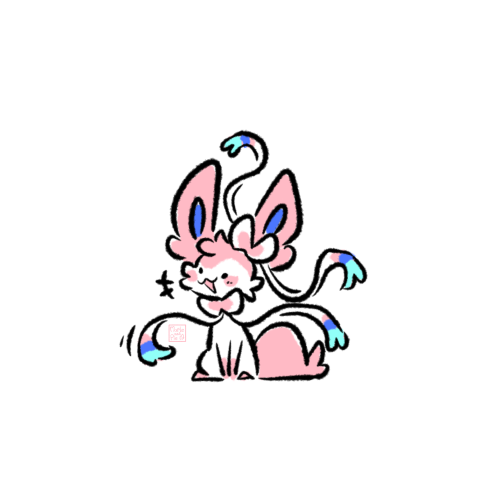


People keep following me idk why haha- I haven't posted on this acc in months.
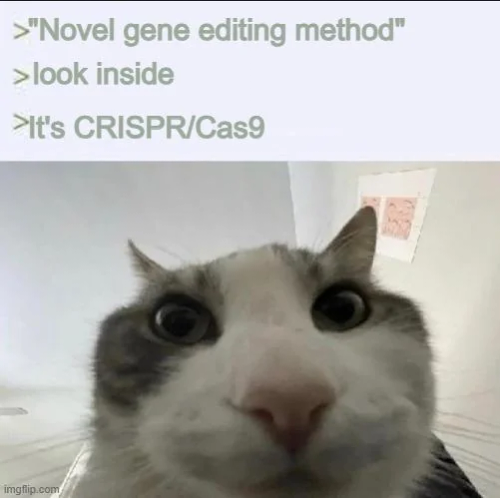
Y'all, I just won €400 in a Science Slam competition that is going toward my research, and I want to thank all of you for being my audience for the last few years. Without this space where I can practice my science communication and my bad lichen jokes, I wouldn't have done nearly as well. Much love to you!
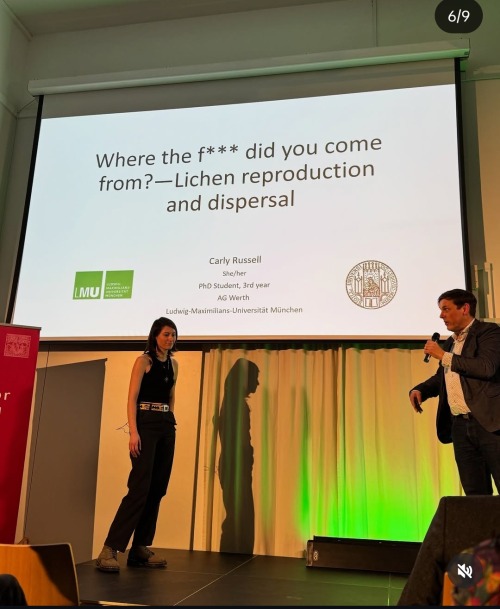
See me here looking extremely uncomfortable to be perceived by others

Lamproderma sp. by Barry Webb

![[Cueball and Beret Guy walk up a grassy hill.]
[They continue and reach the summit.]
Beret Guy: I learned something today.
Beret Guy: I went on one of those family tree sites and kept clicking back, and it turns out I'm related to stromatolites!
Cueball: The bacterial mats?
Beret Guy: Yeah! A few billion years back, on my mitochondria's side.
Beret Guy: My Archaean ancestors absorbed some bacteria that were cousins of stromatolites. That's how I got mitochondria.
Cell nuclei, too.
Cueball: I think there are still living stromatolites. You could get in touch.
Beret Guy: Nah, they're probably busy. I don't want to bother them.
Cueball: So what are you going to do with this knowledge? Nothing?
Beret Guy: Lying on a hill in the warm sun is an old family tradition.](https://64.media.tumblr.com/c89001703c4bee9cd88768fa7be5a9ea/635db03644e420a1-6e/s500x750/6689cc04fba0cfd9c3c95d2cce3b2cef8ad1deaa.png)
If only my ancestors had been fortunate enough to marry into the branch of the bacteria family that could photosynthesize, like all my little green cousins here.
Stromatolites [Explained]
Transcript Under the Cut
[Cueball and Beret Guy, seen from a far in silhouette are walking up a grassy hill.]
[They continue walking up the hill, reaching its grassy summit. Now with a standard white background. Beret Guy is a bit ahead of Cueball.] Beret Guy: I learned something today. Beret Guy: I went on one of those family tree sites and kept clicking back, and it turns out I'm related to stromatolites!
[Closeup on Cueball. Beret Guy's reply comes off-panel from a starburst on the right edge of the panel.] Cueball: The bacterial mats? Beret Guy [off-panel]: Yeah! A few billion years back, on my mitochondria's side.
[Cueball and Beret Guy standing on the top of the grassy hill facing each other. Berety Guy holding a hand out towards Cueball.] Beret Guy: My Archaean ancestors absorbed some bacteria that were cousins of stromatolites. That's how I got mitochondria. Beret Guy: Cell nuclei, too.
[Cueball is standing behind Beret Guy who is now sitting down in the grass leaning back on one arm with the other arm resting on his bend knee.] Cueball: I think there are still living stromatolites. You could get in touch. Beret Guy: Nah, they're probably busy. I don't want to bother them.
[Cueball is sitting behind Beret Guy who is now lying down, both again shown in silhouette from a far, revealing they are on the top of the grassy hill.] Cueball: So what are you going to do with this knowledge? Nothing? Beret Guy: Lying on a hill in the warm sun is an old family tradition.

Plant Immune System Part 3
The plant immune system is the topic of my PhD thesis, which I'm currently writing following several years of lab-based research as a PhD student at Imperial College London under the supervision of Professor Colin Turnbull.
Here's an introduction to my research, which focused on how certain plants defend themselves against aphids.
Aphids are an important insect pest that threaten agriculture worldwide. As we learned in the previous post, plant resistance (R) genes control resistance to specific pests and pathogens through interaction with effectors from the invaders. Since examples of R gene-dependent aphid resistance have been documented in different plant species, aphid-specific R genes may enable the development of resistant crops.
In the model plant Medicago truncatula, there are some varieties that are resistant to aphids and other varieties that are susceptible to Pea Aphids (Acyrthosiphon pisum). Whether the plant is resistant also depends on the variety of aphid. In my project, the A17 plant is resistant to PS01 aphids but not to N116 aphids, while the DZA plant is susceptible to both aphid varieties.
What is the key difference in the resistant versus susceptible plants? Resistant A17 plants have a portion of their genome “Resistance to Acyrthosiphon pisum 1” (RAP1) which determines resistance to PS01 aphids, but the genes controlling the defence response and physiological defence mechanisms remain unknown. Two candidate R genes located in RAP1, designated “RAP1A” and “RAP1B”, may control resistance.
My main objective in my PhD project has been to determine whether RAP1A and RAP1B control aphid resistance, and to investigate the RAP1-mediated defence response. I look forward to sharing the findings in publications and in talks next year!
Image credit: Original diagram by Katia Hougaard with images from the Turnbull Lab.
#katia_plantscientist#science#biology#research#plants#botany#plantbiology#phdproject#plantbiology#plantscience#sciencecommunication#diagrams#phd#imperialcollegelondon#phdthesis#medicago#aphid#plantimmunesystem#pestsandpathogens#plantpathology#womeninscience#plantbiologist
Lactose: e-excuse me...
Stomach: hey, what do we have here? Some goddamned lactose!
Small intestine: we don't like lactose here, ya know? You're gatecrashing a very private party!
Large intestine: (pushes him, making him stumble) there's two ways you can leave here... The easy way, or the hard way. What's it gonna be?
Lactose: but I...
Lactase: (deep voice) step back, everyone. (walks up and puts his arm around lactose's shoulders) he's with *me*
Large intestine: lactase?!
Small intestine: b-but you're both...
Lactase: I *said* he's with me. You got a problem with that?
Stomach: (finishes sizing him up) right. Course not. It's cool, lactose. Just don't cause any *problems*, you hear?
Lactose: I-I w-
Lactase: you don't have to answer that, babe. Just keep walking
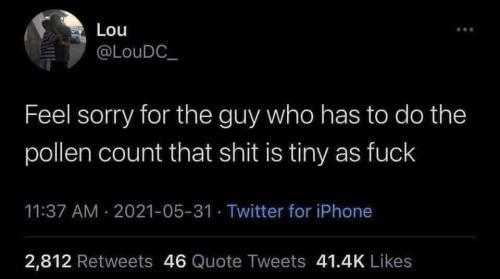

the lichen knowledge iceberg i have constructed on request
for real though imagine being one of the first botanists to study fern and lycophyte sex and you put the sex water (the water in which they are having sex bc they love it soooooo much) under the microscope and theyre cranking out these damn Doohickies that swim like people sperm.... what is going On down there
Did you know! Elephant Seals are negatively buoyant, which means that they sink naturally in the water, but have to use energy to swim back up. This means that they are able to save 18-24% of their energy on a dive compared to having to actively swim down. This descent is so effective that they can actually fall asleep on the way down! They are also officially described as "falling like a leaf". Have a look at the cool diagram below that I pulled from one of my university lectures that I went to a few years ago.
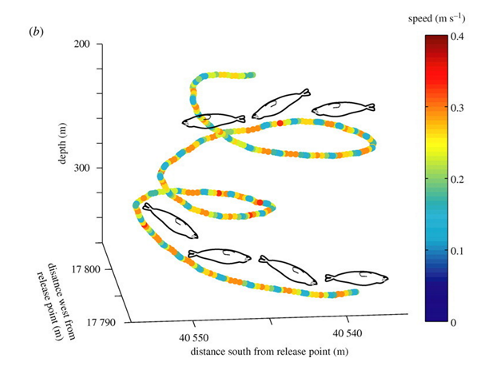
ID: a diagram of the descent pattern of an elephant seal. There are three axes (depth, distance west and distance south) showing the distances from the release point in metres. There is a coloured scale showing the speed of the descent, and a spiral made up of coloured dots that show the route.

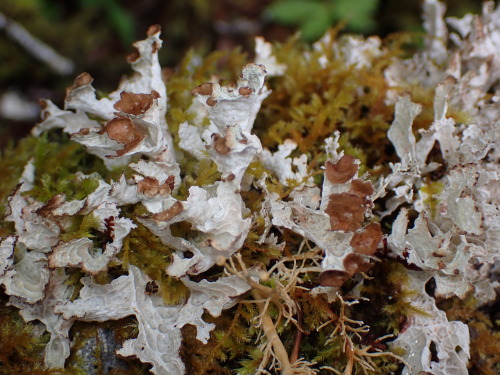


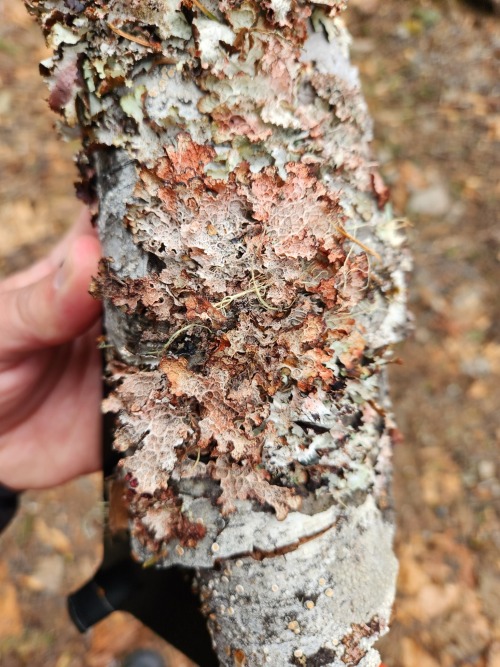
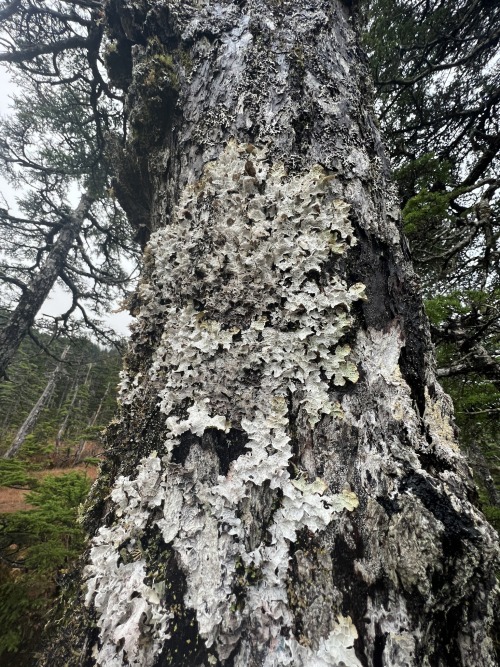

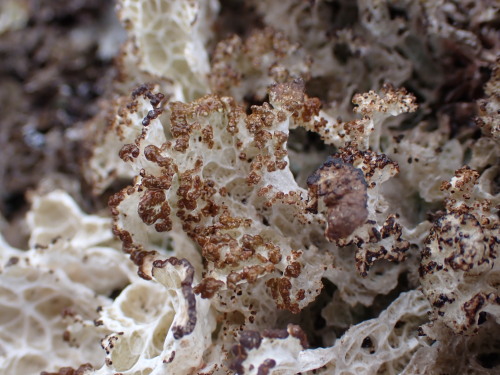
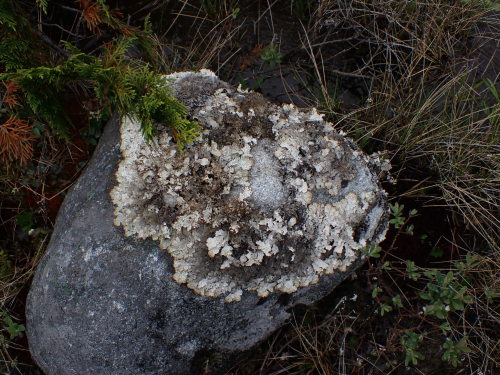
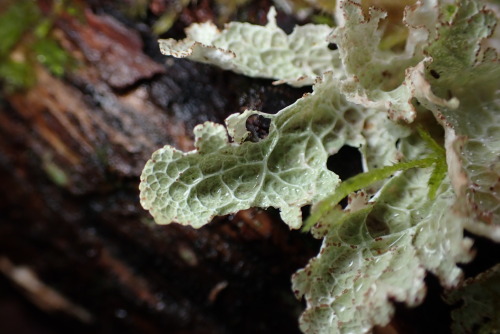
Platismatia lacunosa
Crinkled rag lichen
Why is she so shape? I don't know. One of the many perplexing mysteries of the lichen kingdom.
images: source
Lacking chlorophyll Dodder (genus Cuscuta) has evolved a parasitic relationship with it’s host plants for water and nutrients. It invades its hosts using specialized structures called haustoria, which penetrate the host plant's vascular system to extract resources - sounds like a 1950s horror thriller. Not welcome on farms as it reduces crop yields.

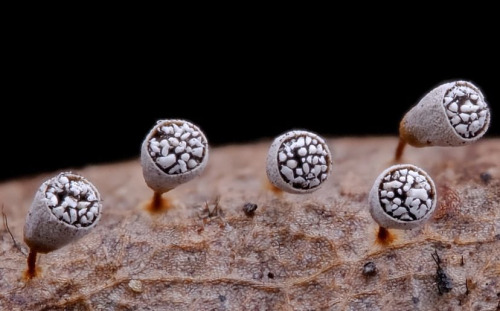
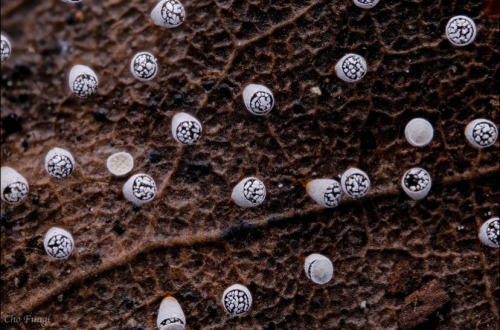
Craterium leucocephalum by Eric Cho
kids these days are spending too much time modifying their reproductive organs into intriguing shapes and giving them bright colors and other pollinator-attracting qualities. back in my day we simply put many spores into a wind or water current and were happy if they made it a quarter mile..... didnt bother with any of that stuff. i remember when we would all take root in a wet patch and throw our spores around, but have you been to a wet patch recently? its disgusting, is what it is



Super tiny Mycena Roseoflava.
Photographed by cyanesense
